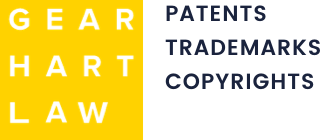Securing patent protection in one country doesn’t automatically grant you rights in another. If you’ve already patented your invention overseas, you may still be eligible for a U.S. patent, but the process depends on timing and specific legal requirements. International agreements give inventors the opportunity to extend protection, but missing deadlines or prior public disclosures can create obstacles. The good news is that options exist to protect your invention in the U.S. Gearhart Law can help you determine the best path forward to safeguard your rights.
Understanding Patent Rights Across Borders
Patents are territorial, meaning the rights granted in one country do not automatically apply elsewhere. If you hold a patent overseas, you must file separately in the U.S. to obtain protection here. However, international agreements make it easier to extend patent rights across multiple countries.
The Paris Convention allows inventors to file in another member country within 12 months of their original filing while keeping the same priority date. The Patent Cooperation Treaty (PCT) provides a structured process to seek protection in multiple countries, including the U.S., giving applicants more time to decide where to file.
Even with these treaties, U.S. patent law has its own standards for novelty and obviousness. An invention approved abroad may still undergo independent review by the U.S. Patent and Trademark Office (USPTO) before securing protection.
The Paris Convention and the One-Year Rule
The Paris Convention allows inventors to seek patent protection in the U.S. after filing in another member country. Under this agreement, you have 12 months from your initial foreign filing date to submit a corresponding U.S. patent application while maintaining the same priority date. This means the USPTO will treat your application as if it was filed on the same date as your original one.
This one-year rule is important because U.S. patent law follows a first-to-file system, where earlier applications take precedence over later ones. If you miss the deadline, you may still apply for a U.S. patent, but your original filing date won’t carry over, which could affect your rights. We help inventors meet these deadlines and secure protection before opportunities slip away.
The PCT Process: Extending Your Patent Filing Timeline
The Patent Cooperation Treaty offers a way to extend the time for filing a U.S. patent application after securing protection overseas. Instead of the 12-month window under the Paris Convention, the PCT process gives applicants up to 30 months from their initial filing date to decide whether to pursue a U.S. patent. This extra time can be useful for securing funding, testing market potential, or refining your invention.
The PCT does not grant an international patent, but it provides a streamlined way to seek protection in multiple countries, including the U.S. During this process, an international search helps identify prior art, giving applicants insight into the patentability of their invention before filing in specific countries. We guide inventors through the PCT process to help them protect their innovations in the U.S. and beyond.
Potential Challenges When Seeking a U.S. Patent
Securing a U.S. patent after obtaining one overseas isn’t always straightforward. Even if another country has granted your patent, the USPTO conducts its own review based on American patent laws. Several challenges may arise, including:
- Differences in patent laws – The U.S. has unique requirements for novelty and obviousness, meaning an invention approved abroad may not meet the standards here.
- Prior public disclosures – If your invention was publicly disclosed or sold before filing in the U.S., it could affect your eligibility.
- Missed filing deadlines – Failing to file within the Paris Convention’s 12-month window or the PCT’s 30-month period can result in lost rights.
We help inventors overcome these obstacles to secure protection in the U.S.
Contact Our Experienced New Jersey Patent Attorneys
If you’ve patented your invention overseas, you may still have the opportunity to secure a U.S. patent—but timing and legal requirements matter. International agreements like the Paris Convention and the PCT offer pathways, but missing deadlines or facing different patent standards can create challenges. At Gearhart Law, we help inventors and businesses protect their innovations in the U.S. and beyond. Contact us today to discuss your options and take the next steps toward securing your patent rights.


